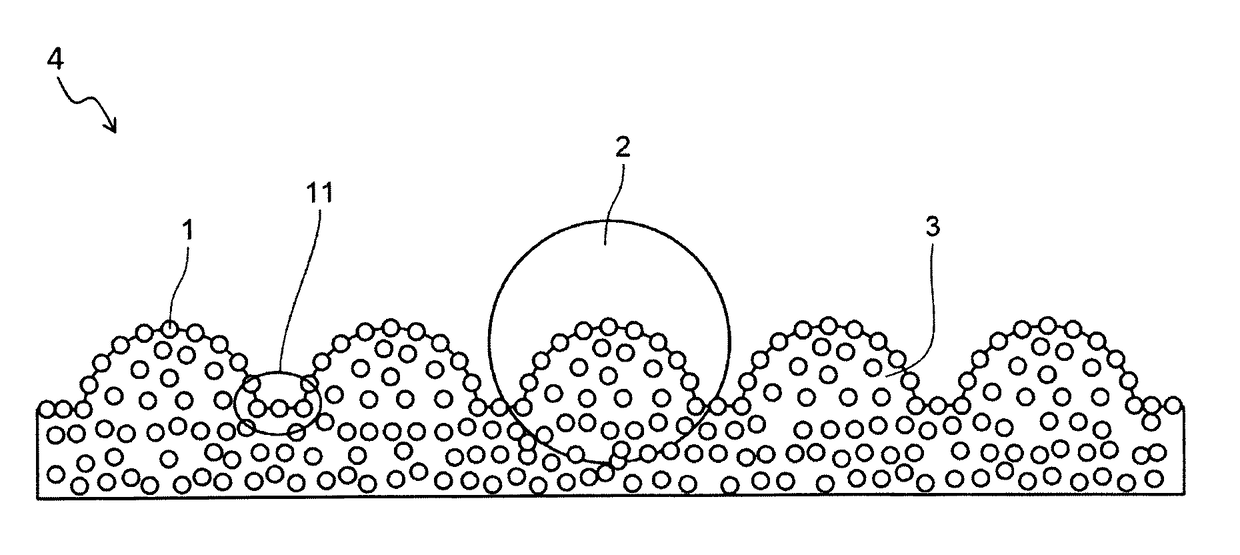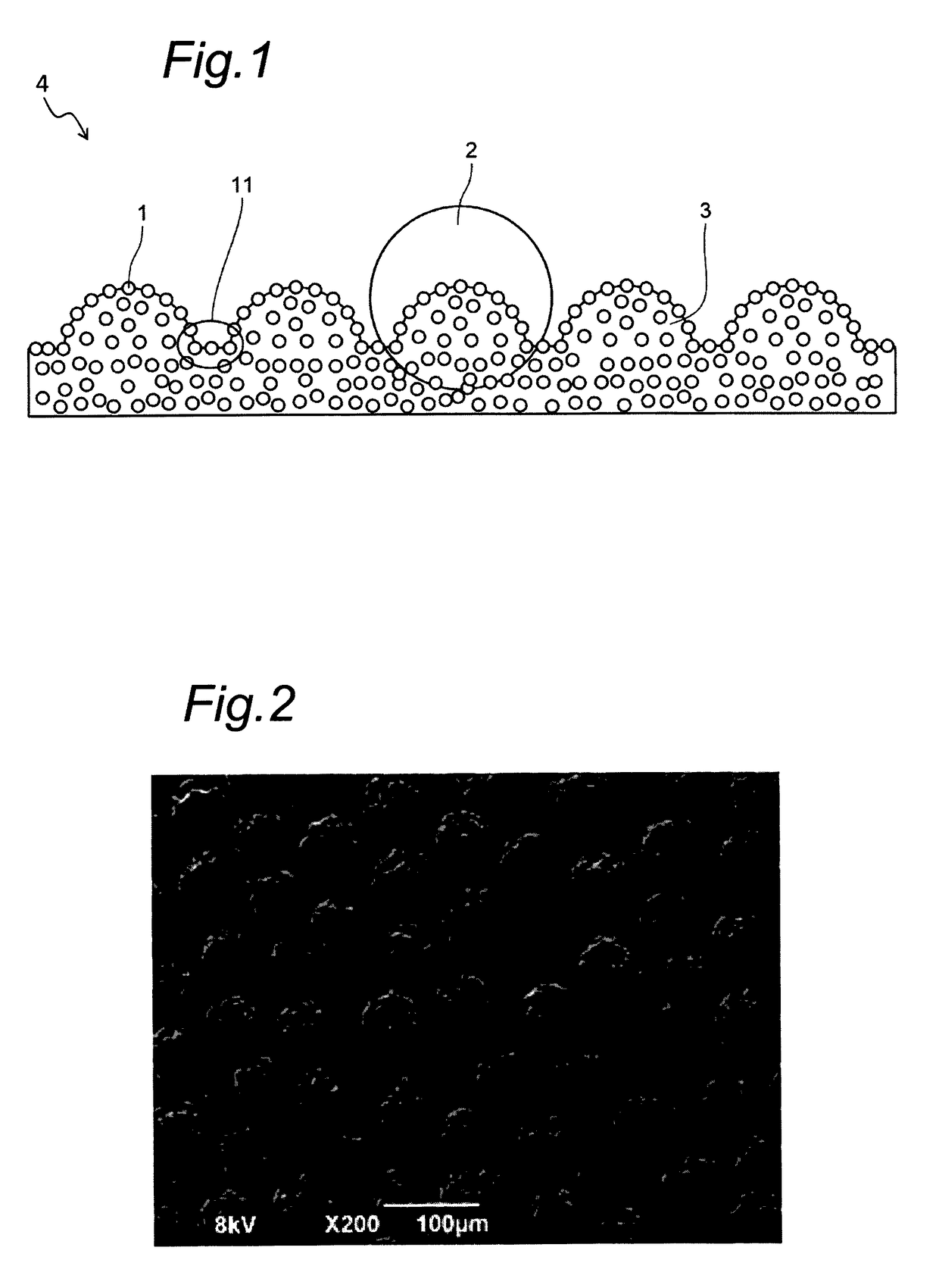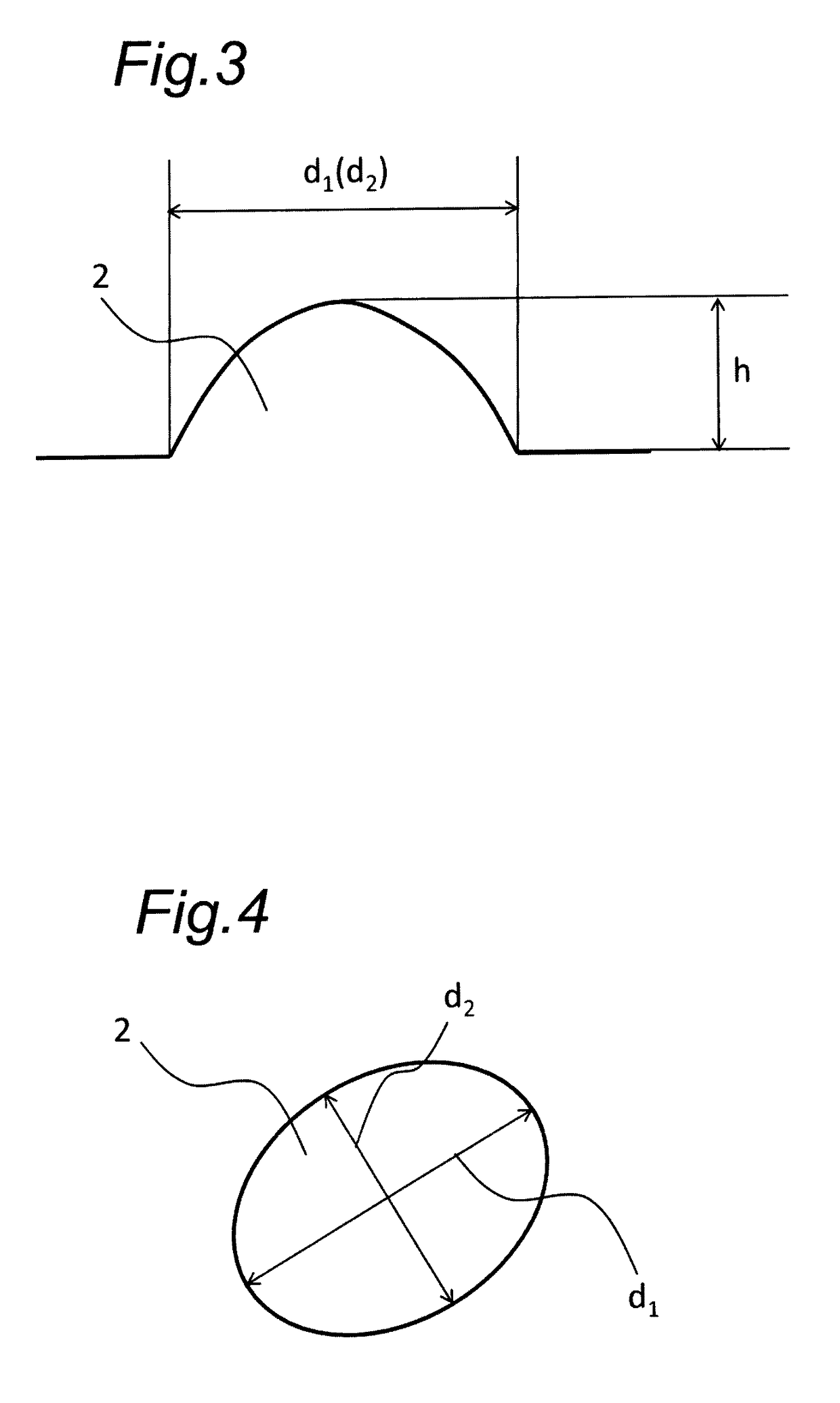Dental polishing instrument
a polishing instrument and dental technology, applied in dental floss, dental surgery, medical science, etc., can solve the problems of inability to obtain high aesthetics, inability to polish, and inability to fix dental plaque, so as to reduce the occurrence of secondary flaws, avoid clogging, and avoid clogging.
- Summary
- Abstract
- Description
- Claims
- Application Information
AI Technical Summary
Benefits of technology
Problems solved by technology
Method used
Image
Examples
example
[0080]An example of embodiments of the present invention is described below with reference to Examples. The embodiments described below do not limit the present invention.
first embodiment
[0081]In the first embodiment, the case is described where a dental composite resin is polished using the disc type polishing instrument that is an aspect of the dental polishing instrument according to the present invention.
[0082]Examples of the disc type polishing instrument are described.
(1) Manufacture of Disc Type Polishing Instrument
[0083]Examples and Comparative Examples of the disc type polishing instrument were manufactured as below.
[0084]For the polishing layer 4, the polishing abrasive grains 1 and the binder resin 3 were mixed at the blending ratios of 50%:50%. In this case, white fused alumina was used as the polishing abrasive grains 1 and their particle diameter was #2000. A polyester-based resin material was employed as the binder resin 3. An isocyanate-based hardening agent was in addition blended as the hardening agent. The blending was executed to set the practical blending ratios to be 100 weight parts of the polyester-based resin, 5 weight parts of hardening age...
second embodiment
[0140]In the second embodiment, the case is described where a dental porcelain is polished using the point type polishing instrument.
[0141]Examples of the point type polishing instrument are described below.
(1) Manufacture Method
[0142]Examples and Comparative Examples of the point type polishing instrument were manufactured as below.
[0143]For the polishing layer 4, the polishing abrasive grains 1 and the binder resin 3 were mixed at the blending ratios of 50%:50%. In this case, artificial diamond was used as the polishing abrasive grains 1 and their particle diameter was set to be #2000. A polyester-based resin material was employed as the binder resin 3. A dilution solvent and a hardening agent were in addition blended. The blending was executed to set the practical blending ratios to be 100 weight parts of the polyester-based resin, 75 weight parts of the dilution solvent, 5 weight parts of hardening agent, and 100 weight parts of the artificial diamond. The mixture was applied to...
PUM
 Login to View More
Login to View More Abstract
Description
Claims
Application Information
 Login to View More
Login to View More - R&D
- Intellectual Property
- Life Sciences
- Materials
- Tech Scout
- Unparalleled Data Quality
- Higher Quality Content
- 60% Fewer Hallucinations
Browse by: Latest US Patents, China's latest patents, Technical Efficacy Thesaurus, Application Domain, Technology Topic, Popular Technical Reports.
© 2025 PatSnap. All rights reserved.Legal|Privacy policy|Modern Slavery Act Transparency Statement|Sitemap|About US| Contact US: help@patsnap.com



